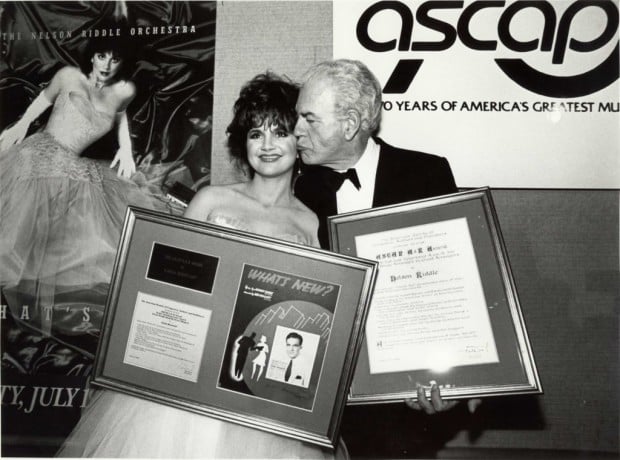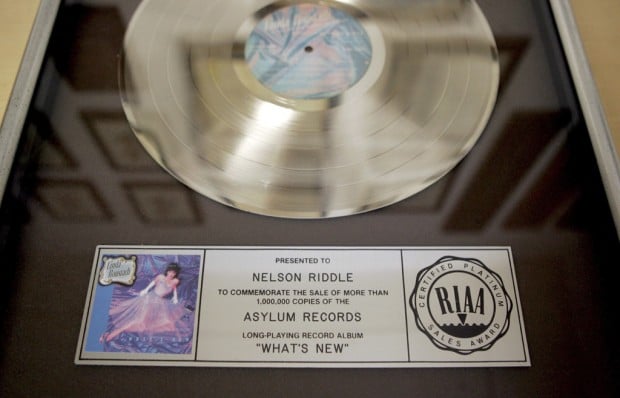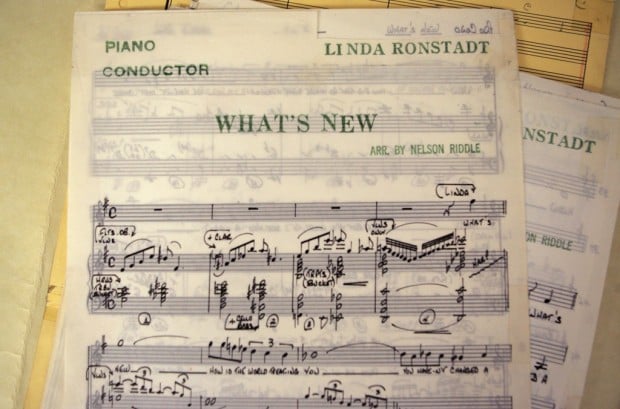The Linda Ronstadt Collection at the University of Arizona School of Music is much more than boxes of memorabilia and scores with famed arranger Nelson Riddle's handwritten notations.
The collection donated by Ronstadt - which the UA announced this week -is a piece of a puzzle the school has been assembling for the past decade to preserve the era of American music that largely defined the country throughout the early part of the 20th century.
"It's a critical centerpiece in more than 10 years of gaining collections that are central to American popular music ... think 1930s to 1980s," said Peter McAllister, the School of Music's outgoing department head. "Certainly Linda with her connection to, oh my gosh every singer and arranger in North America - her holdings are priceless. There are a lot of original manuscripts of scores that were on the stands during recording sessions."
"As we get more and more of these collections ... this could very well be the tipping point. Because of this all of our other collections will get discovered as well," he said.
Ronstadt, 64, donated artifacts from her jazz/American pop trilogy period with Riddle, a renowned arranger and band leader. The pair set about in the early 1980s to revitalize the Great American Songbook, an exercise many at the time thought was ill-advised. But the pair's first album, 1983's "What's New" sold 3 million copies, spent 81 weeks on Billboard's Album Chart and occupied the No. 3 position for six weeks, held back from No. 1 by Michael Jackson's "Thriller" and Lionel Richie's "Can't Slow Down."
Ronstadt and Riddle went on to record two more albums - "Lush Life" in 1984 and "For Sentimental Reasons" in 1986. In all, the albums sold more than 7 million copies and earned Riddle two Grammys.
"Being part of that rock 'n' roll generation, she worked in a different way from the singers of the '40 sand '50s. So she made it possible for Nelson Riddle and those other composers to write in a different way," said Keith Pawlak, who curates the UA music collections. "They were used to writing for the moment so they were writing something that had to be completed within a very short timetable. Nelson had a lot more time because of the production efforts in the 1980s so he could be a lot more deliberate in his writing methods. So we can see a different side to his music, a more deliberate approach to his writing."
Ronstadt's collection joins nearly a dozen others at the UA School of Music, including those of Riddle, band leader and composer Artie Shaw, pianist/composer Les Baxter, jazz singer Sue Raney and renowned music copyist Vern Yocum, whose client list included Frank Sinatra, Nat King Cole and Riddle.
Those looking for salacious insights into Ronstadt's celebrated rock 'n' roll career, though, will be out of luck. Pawlak said her collection is limited to her work with Riddle, including photographs from recording sessions and concert performances.
But the contents of the 10 boxes Ronstadt donated - the last ones will come this summer - shed light on "such an important part of our history," Pawlak said. "These are real important documents of our past."
Ronstadt, a Tucson native, attended the UA in the 1960s before she left for California and a career in music. She went on to become Tucson's and Arizona's most famous pop star with an iconic, musically diverse career that spanned the 1970s through the 1990s. She released more than 30 solo albums, 15 compilations or greatest hits packages and charted 38 Billboard Hot 100 singles, 21 of them Top 40 hits. In the 1970s she was the highest paid woman in rock; in 1978 alone, her record sales exceeded $60 million.
Ronstadt scored No. 1 hits in country and rock, and then at the height of her popularity, defied convention and recorded the Riddle albums, which included Riddle's arrangements of "Round Midnight," "Somewhere Out There," "I've Got A Crush On You," "Someone to Watch Over Me," "Mr. Sandman," "My Funny Valentine" and "What's New?"
In addition to her recording career, Ronstadt has performed light opera, with roles in Puccini's "La Boheme" and Gilbert & Sullivan's "The Pirates of Penzance."
Did you know
How Nelson met Linda: In 1982 Linda Ronstadt approached Nelson Riddle with a proposition to write arrangements for pop standards. The pair recorded three albums that, in the view of many, single-handily gave the genre its biggest revitalization to date. The albums sold more than 7 million copies and earned Riddle two Grammys. The last one was awarded posthumously a year after Riddle died in 1985.
In 1998, Riddle's widow donated the proceeds from the sale of Riddle's Bel Air home to the University of Arizona to establish the Nelson Riddle Endowed Chair, held by Thomas Cockrell. The donation also included 500 of Riddle's scores, royalties, letters and photographs that are part of the Nelson Riddle Collection maintained by the School of Music.
Contact reporter Cathalena E. Burch at cburch@azstarnet.com or 573-4642.







